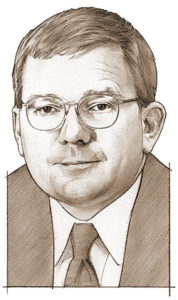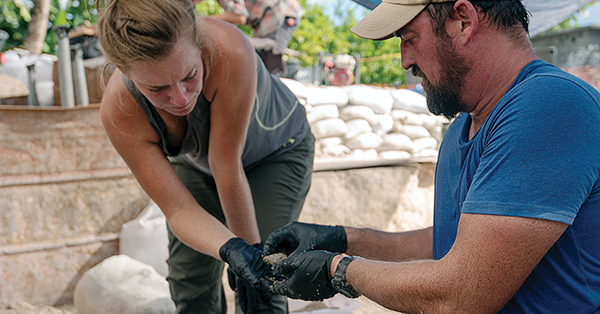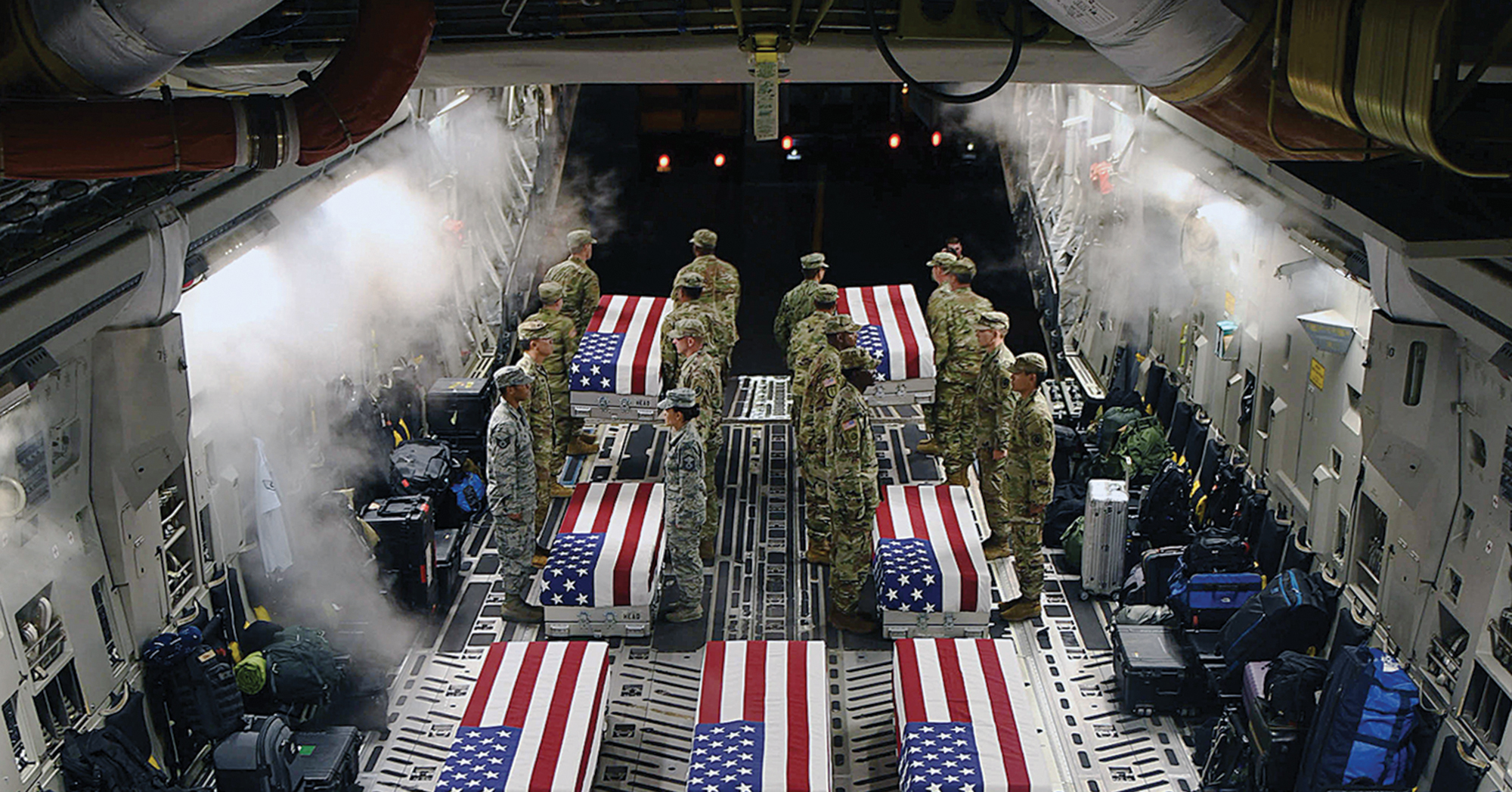
When UPS pilot Mark Noah isn’t flying around the country, he’s often helping to locate the remains of missing American servicemen from World War II in Europe and the Pacific. Noah is the president and founder of History Flight, a nonprofit he started in 2003 to restore vintage aircraft and preserve aviation history. Once he learned nearly 80,000 U.S. military members were still missing in action from World War II, however, his organization began assembling teams to find the remains and have them properly interred. To date History Flight has recovered 325 sets of remains, many of them from forgotten graves on the central Pacific island of Tarawa. For his dedicated efforts Noah was named an honorary Marine by the commandant of the U.S. Marine Corps, a distinction he shares with fewer than 100 individuals. Noah recently spoke with Military History about why he gives so much of his time and money to this cause.
How did History Flight begin?
We started 16 years ago restoring World War II planes and giving people rides in them. That was a neat way to connect with history. Then I was invited to be a technical adviser on aircraft structures for a wreck investigation. We got to meet the son of a missing airman, and it was very compelling. I didn’t know it at the time, but 19 percent of all World War II casualties are still missing. That was a big eye-opener for me. We shifted focus from rides in historic airplanes to search and recovery of the men who flew them, because people are more important than machinery.
We now have full-time teams working all over the world, including a continuing project in Tarawa. We are working in Europe and the Philippines, too. History Flight is a public-private partnership with the U.S. military. We do the research as well as the search-and-recovery work with them. A large number of doctorate and master’s-level archaeologists work for us, as do remote-sensing experts, retired FBI investigators and others who help us do the sleuthing necessary to find these sites.
How did you learn about missing Marines on Tarawa?
We were doing research into missing airplane crews while working in the National Archives in Washington, D.C., and I found a report from the graves registration and recovery team that reported 49 percent of the known buried Marines were not recovered on Tarawa. From there we decided to start digging deep into the process of how we would find them.
Why were there so many missing men on Tarawa?
The Marines actually did a pretty good job with the burials. When they left the day after the battle, the Navy construction battalions turned the whole place into an unsinkable aircraft carrier. They put buildings, roads and infrastructure on top of the graves. That’s why they were never able to find them after the war.
How did your team discover the graves?
A combination of new- and old-school technology. We used remote sensing, cartography, ground-penetrating radar and cadaver dogs to give us a general idea of where to find the grave sites. Then we looked closely at what was beneath the ground. It took 12 years, but we recovered the remains of 309 Americans on Tarawa.
‘We are helping to put the American back in America with every recovery’
What happens when you find a grave beneath a house?
History Flight has an excellent relationship with the local government. We’ve received permission to build houses and relocate residents. We’ve recovered more than 50 Marines from beneath buildings. In one case we found 12 beneath a two-story building. We were able to brace the structure with jacks and then dig down through the floor. I thought we were going to have to demolish it, but that didn’t happen.
What kind of training do your people get?
We have a large number of experienced archaeologists with forensic skills, and they all go through a course with the Department of Defense to learn standard operating procedures. We hire very knowledgeable people and train them about what to expect on Tarawa. There are about 30,000 people who live on that tiny island on top of all the graves. We’ve excavated three separate sites that are the number one, two and three largest recoveries since World War II.

Where else are you searching?
There are still 21,000 Americans missing from World War II in the European Theater of Operations. That includes infantrymen from D-Day and the Battle of the Bulge and all the fighting across the entire continent, as well as a large number of aircrew. We’ve been concentrating on known cases so we can recover as many people as possible. Most of the recoveries we’ve done there have been aircrews.
PBS recently aired a documentary about one of the guys we found in Germany. Homecoming: Sgt. Hamilton’s Long Journey was produced by WQED in Pittsburgh. Sergeant Vernon Hamilton was one of three crewmen in an A-26 Invader shot down during a raid over Dülmen, Germany, on March 21, 1945. We located the crash site at a farm and recovered his body along with the other two airmen.
How do you determine where to search?
We do a ton of research. From there we launch remote-sensing expeditions. For example, in Belgium we recovered a P-47 pilot who was shot down during the Battle of the Bulge. We knew the plane had crashed in a certain town, so we started knocking on doors, asking if people remembered anything. Everyone knew about it. One of the homeowners told us he had landing gear holding up part of his garage. He showed us how he had built it into the wall. We used radar to find the crater, which had been filled in. We got permission to excavate and recovered the pilot.
What’s happening in the Philippines?
We’ve done a lot of research there but don’t have the resources to start excavating yet. There are almost 10,000 U.S. service members missing in the Philippines, so there is a lot of work to do. The largest surrender of U.S. forces in World War II was there, and the Japanese were hardly hospitable caretakers of those POW populations. We had some rough maps from the Marine Corps to give us the general location of some graves on Tarawa, but the POW graves in the Philippines were never marked or recorded. There are horrible stories of atrocities and clandestine burials by the Japanese. At Palawan they forced the POWs into air raid shelters, then poured gas on top of them. The ones who ran out were shot or bayoneted. Amazingly, 11 men survived. They swam 5 miles across a bay to where the Filipinos helped them. We’ve profiled the Palawan site and intend to do work there once we have enough funding. One of the cemeteries has a Filipino FBI building on it. “Of course, you can dig here,” one of the Filipinos said to us. “We see ghosts almost every night.”
‘It’s important for people to do something now, because the relatives of the missing are dying’
Do you go on the missions?
Yes. I’ve led more than 50 recovery projects. My employer is very generous and has granted me a lot of unpaid leave. Basically, I have two jobs. My day job is flying for UPS. History Flight is a full-time volunteer job I’ve done for 16 years. It’s a great project—there is no question in my mind about that.
You were not in the military. Why do you do this?
My dad was a veteran. His uncles and my grandfather were in World War II. We have a strong family connection. I’ve been flying airplanes since I was 15 and became fascinated in restoring World War II planes. When I found out there were so many missing men, that became very compelling to me.
We tell people we are helping to put the American back in America with every recovery. I feel this is really important. It’s not widely known that so many people are missing, and it’s an outrage that not much is being done about it. It’s critical that something be done.
What does your family think of your volunteer work?
My wife and children really like what we are doing and respect the value of it. I am away from home a lot, so it’s tough on my kids. But I have brought them on some missions. Last summer they got to work with us in France. Hopefully, every summer in the future they will get to do that again.
Have you recovered any famous people?
They are all equally important. On Tarawa we recovered a large grave that included a Medal of Honor recipient, Alexander Bonneyman Jr. Obviously, he was a very important individual, but no more important than anyone else. That’s the way we look at it.
How do you pay for all this?
Initially, it was 100-percent private funding. An old friend and I paid for most of it. When we became successful, we entered into a series of collaborative agreements with the Department of Defense, and they pay for a portion of it now.
Where does the rest of the money come from?
We have fundraisers, but I find almost no one in America donates to this sort of thing. It’s very rare we find people willing to support it. We’ve had to pay a lot of the bills ourselves.
I gave congressional testimony recently about how recovering World War II, Korean War and Vietnam-era casualties has been chronically underfunded since the 1950s. It’s important for people to do something now, because the relatives of the missing are dying. We accept donations on both our website and Facebook page [see below].
Once we got a donation from a homeless veteran. He was at the VFW, getting a free meal, when he heard about our project. He sent $2.76, which was really touching. If every person in America gave $2.76, we could actually fund the recovery of all those people.
You see the MIA flag hanging everywhere, yet almost no one will step up to help out. Americans like their history with icing on it. They like interviews with old World War II guys talking about how it was. They don’t want to hear the stories about the people who were burned to death at Palawan.
What is your hope for the future?
We’d like to see more recoveries. We’d like to see more people get engaged and volunteer to help us. We’ve done more than anyone else in the private sector, and we’d like to continue that success. MH
Readers can support the work of History Flight by donating at historyflight.com/donate or facebook.com/history-flight-109735866254.





